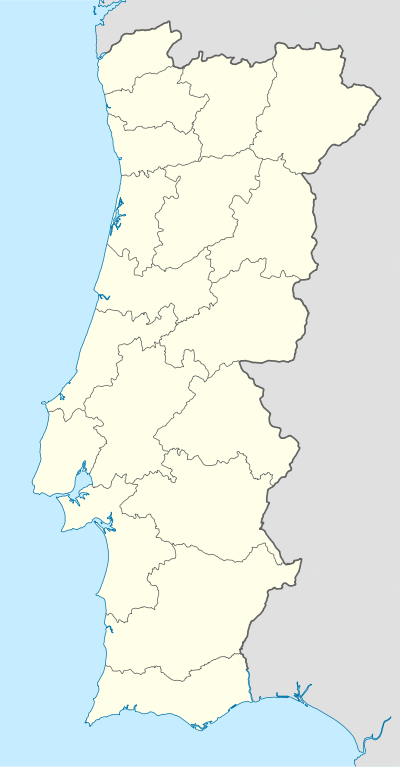Military and Technical Training Center of the Air Force
| Military and Technical Training Center of the Air Force Centro de Formação Militar e Técnica da Força Aérea | |||||||||||
|---|---|---|---|---|---|---|---|---|---|---|---|
| IATA: none – ICAO: LPOT | |||||||||||
| Summary | |||||||||||
| Airport type | Military | ||||||||||
| Operator | Portuguese Air Force | ||||||||||
| Location | Ota (Alenquer) | ||||||||||
| In use | 1938-1992 | ||||||||||
| Elevation AMSL | 140 ft / 43 m | ||||||||||
| Coordinates | 39°05′6.6″N 08°57′2.5″W / 39.085167°N 8.950694°WCoordinates: 39°05′6.6″N 08°57′2.5″W / 39.085167°N 8.950694°W | ||||||||||
| Map | |||||||||||
 LPOT Location in Mainland Portugal | |||||||||||
| Runways | |||||||||||
| |||||||||||
The Military and Technical Training Center of the Air Force (Portuguese: Centro de Formação Militar e Técnica da Força Aérea) or CFMTFA is the unit responsible for the military, humanistic, technical and scientific training of the personnel of the Portuguese Air Force. It is located in Ota (Alenquer Municipality), occupying the facilities of the former Ota Air Base.
Around 90% of the personnel of the Portuguese Air Force is trained at Ota.
Mission
The CFMTFA is responsible to provide the following training for the Portuguese Air Force personnel:
- Training and promotion course for the sergeants of the permanent staff;
- Training courses for the engaged staff (corporals, sergeants and officers) of the several specialties of the Air Force;
- Basic military training for the volunteer engaged staff;
- Vocational training courses;
- Refreshment or specialization courses;
- Training of instructors;
- Vocational training for the civilian staff of the Air Force;
- Other training courses with interest for the Air Force or for the Ministry of National Defense.
Air infrastructure
The CFMTFA occupies the facilities of a former air base deactivated in 1992. The air infrastructures include a 2500 m long asphalt certified air strip. However, as the unit does not maintain permanent flying operations, the air traffic control, meteorology, fire rescue and fuel supply services are deactivated.
The Ota air facilities were the planned site for the Ota Airport - the future new Lisbon international airport - from the late 1990s. The CFMTFA would then be transferred to the Ovar Air Base. The project was however aborted in January 2008 when the decision was taken that the new Lisbon airport would be built in the area of the present Field Firing Range of Alcochete.[1]
History
The present CFMTFA was inaugurated on 14 April 1940 by the Portuguese President Óscar Carmona, as the Air Base No 2 of the Aeronáutica Militar (the Aviation branch of the Portuguese Army). At that time, the base was home of a fighter squadron equipped with Gloster Gladiator fighters, two day bomber squadrons equipped with Junkers Ju-86 aircraft and two night bomber squadrons equipped with Junkers Ju-52 aircraft.
In the 1950s, already part of the new fully independent Portuguese Air Force, the Ota Air Base became home of squadrons of F-47 Thunderbolt, F-84G Thunderjet and F-86 Sabre fighters. The base is also home of the São Jorge and Dragões aerobatic teams.
With the transference of the F-86 Sabre jet fighters to the new Monte Real Air Base in 1958, the Ota Air Base becomes a training base.
In 1960, the base becomes the home of the Specialists Technicians Training Group of the Air Force (GITE, Grupo de Instrução de Técnicos Especialistas). The GITE is transformed in the Training Center no. 7 in 1975, renamed Training Center no. 2 in 1976.
At the same time, the base stations training squadrons equipped with T-33 and De Havilland Chipmunk aircraft.
In 1992, the Ota Air Base is deactivated as air base, merging with the Training Center no. 2 and becoming the Military and Technical Training Center of the Air Force.